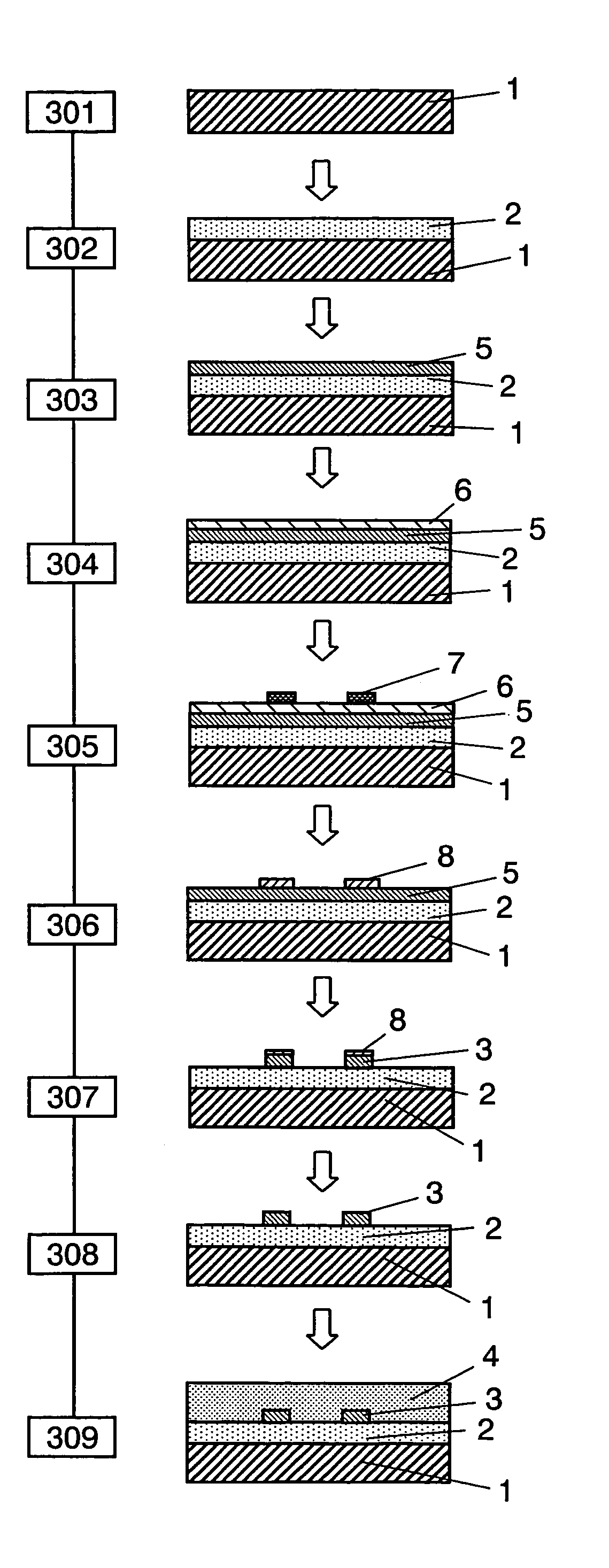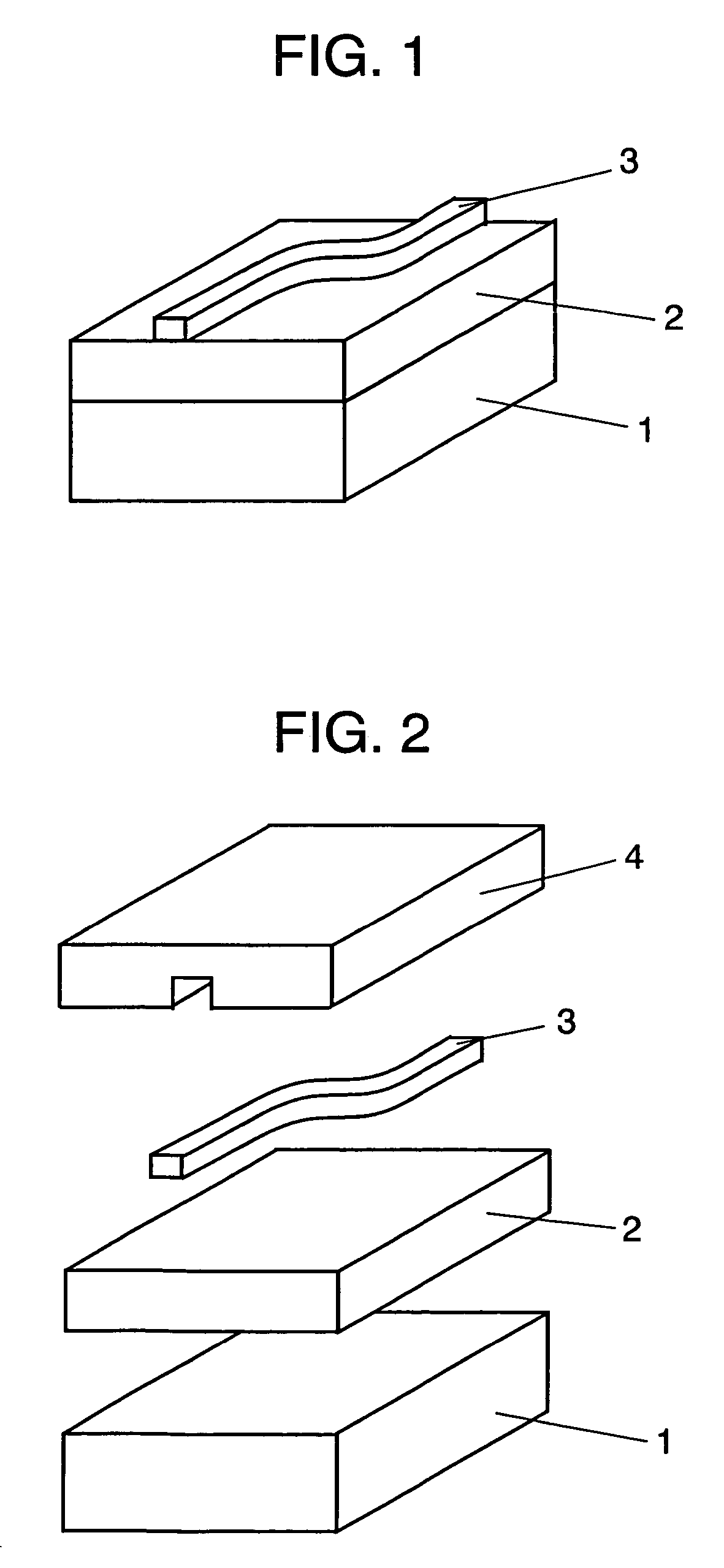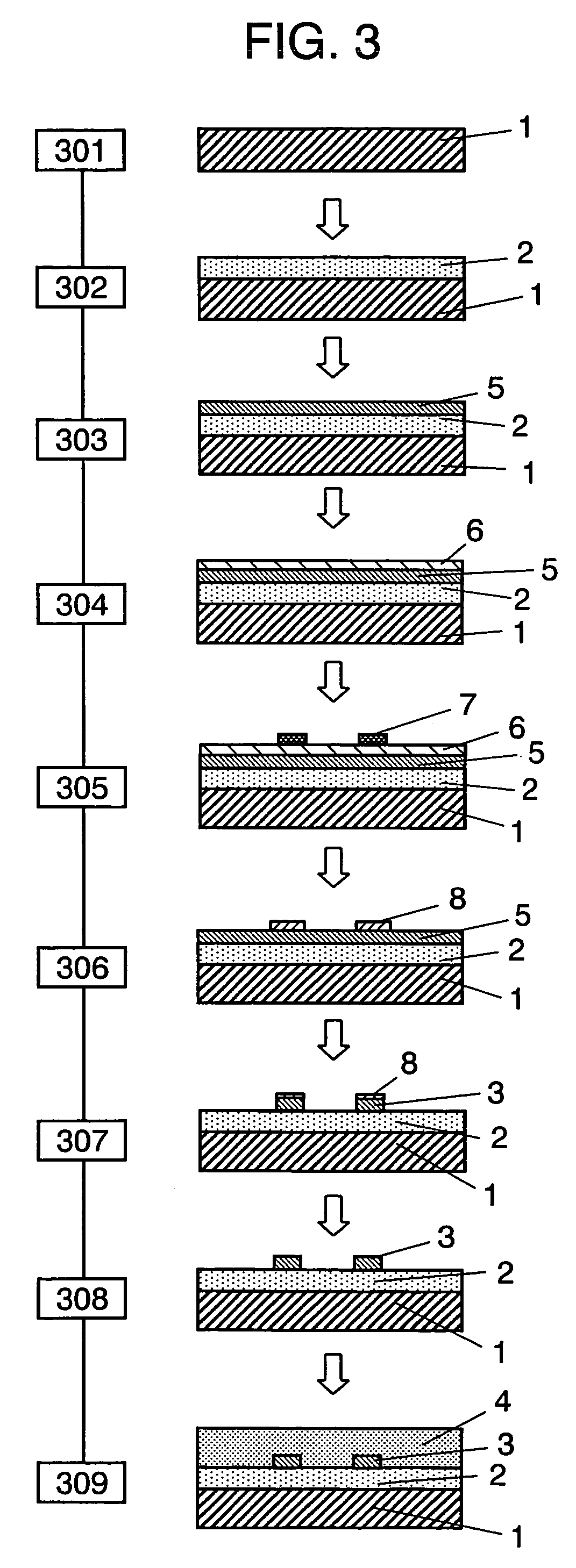Optical waveguide manufacturing method
- Summary
- Abstract
- Description
- Claims
- Application Information
AI Technical Summary
Benefits of technology
Problems solved by technology
Method used
Image
Examples
embodiment 1
[0015]FIG. 1 is a perspective view to illustrate one of the manufacturing steps of the present invention. Substrate 1 is silicon or various types of glass, for example. Here, various types of glass mean glass that contains at least one of alkaline elements, alkaline earth elements and rare earth elements. First clad layer 2 is formed with SiO2 or various types of glass.
[0016]When the thermal expansion coefficients of substrate 1 and first clad layer 2 are different, thermal stress is sometimes caused. Accordingly, most preferable is that the thermal expansion coefficients of the two are equal, but they can be used when the thermal expansion coefficients are close. Also, when substrate 1 is made of silicon, the first clad may be made by oxidizing silicon into SiO2. Also, substrate 1 and first clad layer 2 may be made of the same material. Core pattern 3 is formed using SiO2 or various types of glass and its refractive index is made slightly greater than that of first clad layer 2.
[00...
embodiment 2
[0038]Referring to FIG. 9, a description of another exemplary embodiment will be given.
[0039]Subsequent to substrate preparation step 901, first clad layer 12 is formed on substrate 11 in first clad formation step 902. In core layer formation step 903, core layer 15 is formed on first clad layer 12, and in subsequent resist processing step 904, resist pattern 17 is provided on the surface of core layer 15. Next, in core etching step 905, core pattern 13 is formed by dry etching core layer 15. After removing resist pattern 17 in resist removal step 906, second clad layer 14 is formed on first clad layer 12 in second clad formation step 907 in a manner such that it covers core pattern 13, thus completing an optical waveguide. In summary, in the embodiment 2, resist pattern 17 itself works as a mask for dry etching.
[0040]In the first and second exemplary embodiments, a description was given of examples of methods for manufacturing an optical waveguide that has a core layer consisting o...
PUM
 Login to View More
Login to View More Abstract
Description
Claims
Application Information
 Login to View More
Login to View More - R&D
- Intellectual Property
- Life Sciences
- Materials
- Tech Scout
- Unparalleled Data Quality
- Higher Quality Content
- 60% Fewer Hallucinations
Browse by: Latest US Patents, China's latest patents, Technical Efficacy Thesaurus, Application Domain, Technology Topic, Popular Technical Reports.
© 2025 PatSnap. All rights reserved.Legal|Privacy policy|Modern Slavery Act Transparency Statement|Sitemap|About US| Contact US: help@patsnap.com



